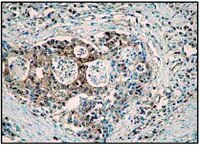APT139 Sigma-AldrichCaspase 9 Colorimetric Activity Assay Kit, LEHD
Caspase-9 Colorimetric Activity Assay Kits provide a simple & convenient means for assaying the activity of caspases that recognize the LEHD.
More>> Caspase-9 Colorimetric Activity Assay Kits provide a simple & convenient means for assaying the activity of caspases that recognize the LEHD. Less<<Recommended Products
Overview
| Replacement Information |
|---|
Key Spec Table
| Species Reactivity | Key Applications | Detection Methods |
|---|---|---|
| Ma | ACT | Chromogenic |
| References |
|---|
| Product Information | |
|---|---|
| Components |
|
| Detection method | Chromogenic |
| Quality Level | MQ100 |
| Applications | |
|---|---|
| Application | Caspase-9 Colorimetric Activity Assay Kits provide a simple & convenient means for assaying the activity of caspases that recognize the LEHD. |
| Key Applications |
|
| Physicochemical Information |
|---|
| Dimensions |
|---|
| Materials Information |
|---|
| Toxicological Information |
|---|
| Safety Information according to GHS |
|---|
| Safety Information |
|---|
| Packaging Information | |
|---|---|
| Material Size | 25 assays |
| Transport Information |
|---|
| Supplemental Information |
|---|
| Specifications |
|---|
| Global Trade Item Number | |
|---|---|
| Catalogue Number | GTIN |
| APT139 | 04053252732010 |
Documentation
Caspase 9 Colorimetric Activity Assay Kit, LEHD SDS
| Title |
|---|
FAQ
| Question | Answer |
|---|---|
| Why does caspase often exhibit different molecular weights? | Full-length caspase 3 (pro-form) is 32kDa. Upon activation, caspase-3 is cleaved generating two smaller subunits of 17 kDa and 12 kDa. Other Caspases include Caspase 1 (proenzyme at 45kDa and subunit at 20kDa); Caspase 6 at 34kDa; Caspase 7 at 38kDa; Caspase 8 at 55kDa and Caspase 9 at 46-48kDa. It should be noted however that it can be difficult to detect the active fragments of many caspases because of their small size and biologically short life. The pro-forms are much more stable and readily detectable. |







